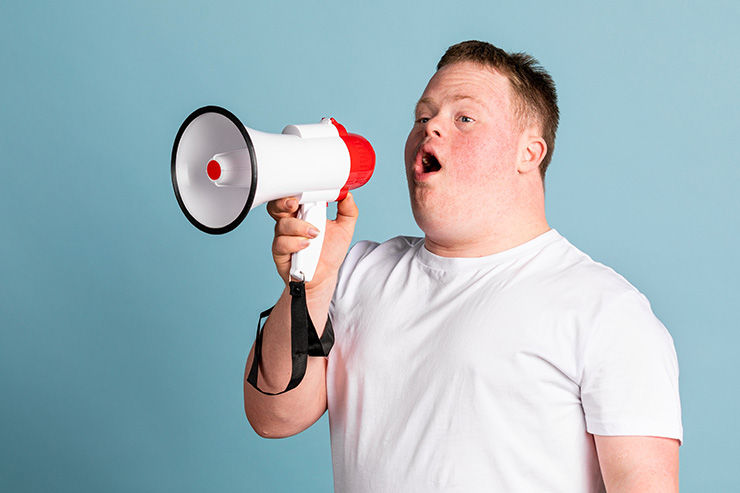Communicate Your Way with AAC
- OSCAR Care Group

- Aug 26, 2024
- 4 min read
Updated: Dec 17
When someone says “communication,” what is the first thing that comes to your mind? Talking, speaking, listening? Although these might be the first modes of communication that we think of, these are just some of the ways in which we can communicate.
Communication refers to when information is exchanged from one person to another. This can happen face-to-face or over text messages, emails, phone calls and letters. Communication is a vital part of our existence. It allows us to convey our thoughts, feelings and ideas, and is essential throughout all facets of our lives.

For some individuals, they are unable to communicate verbally. In a world where we primarily use speaking as our means of communication, people who cannot or do not speak are at a disadvantage. They require an alternative way to convey their messages, and this is achieved by using alternative and augmentative communication. Let’s explore the ways in which we can communicate through Augmentative and Alternative communication, otherwise known as AAC.
What is Alternative and Augmentative communication?
Alternative and Augmentative communication (AAC) is communicating in all ways other than oral speech. Alternative means to be used instead of speech, and augmentative means to add to speech. When you think about it…we all use AAC!
When you text someone, wave at someone or write a note to someone, you are engaging in the use of AAC. AAC can be used to assist someone to convey their own messages, and to support someone’s understanding of spoken language.
AAC can be divided into 3 main categories: high tech, low tech, no-tech.
High-tech: This includes all digital technologies such as communication apps on iPads or tablets, using a computer with text-to-speech output, keyboards, and systems with eye-gaze technology. These devices often have speech output that can say anything that is put into the system the individual is using. These systems can have symbols, words, phrases, or require text to be written into it, and can be customised for the individual’s needs.
Low-tech: This involves any communication systems that don’t use digital technology. For example, picture symbols, drawing, writing, communication boards, photo books and visual schedules. Low-tech devices generally cannot be changed as easily as high-tech devices.
No-tech: As the name suggests, this uses no technology and no devices. Some examples include using sign language, body language, gesture, facial expression, and vocalisations.

Who are AAC systems for?
AAC systems are generally used by those who cannot solely rely on speech as their main form of communication. Individuals who have limited or no verbal speech, motor speech disorders and reduced understanding of spoken language will all benefit from using AAC. People use AAC across the lifespan. ACC can help those younger than 3 years, all the way up until the end of their lives. AAC can be used temporarily or long-term.
Those who might use AAC temporarily include individuals who have suffered from a stroke, traumatic brain injury, or other conditions where their speech and language skills may improve. Alternatively, someone may use an AAC device long-term or for their whole lives if they have disabilities such as autism, cerebral palsy, or a progressive neurological condition such as Parkinson’s or Multiple Sclerosis.
How can I find the right AAC system for me?
A Speech Pathologist can assist you to find the best AAC system for you or your loved one. This will typically involve an assessment of your communication needs and physical abilities, and trialing several types of AAC systems until you find the one that works best for you. Once you have found the system that works best, they will help to train you, family members, carers, and other communication partners in its use.
It’s important to remember that learning to use an AAC system can take time and patience, and often requires the communication partner to model and use the communication systems alongside the individual requiring it.
Speech Pathologists can assist communication partners to learn how to model the device to the individual. They will also work with NDIS, and other companies to assist with completing any paperwork required for the device.
What are the benefits of AAC?
AAC allows individuals who have difficulty communicating through spoken language to express their thoughts, wants, needs and feelings effectively.
It can…
Reduce frustration and behavioural challenges
Reduce communication breakdowns
Assist someone to understand spoken language
Increase their social interactions
Improve their well-being and quality of life.
Additionally, using an AAC system has been shown to support language development. It is a common misconception that using an AAC system will prevent an individual from learning to speak.
Communicate in their own way
In essence, everyone has a right to a voice and to communicate in their own way. AAC enables individuals to communicate more effectively, participate in conversation and social interactions and allows them to form connections and friendships. If you would like to explore using AAC to improve your communication, please reach out to our Speech Pathology team who can assist you to find the right system for you.


